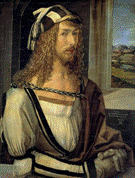Art, Art History and Design, School of

School of Art, Art History, and Design: Faculty Publications and Creative Activity
Document Type
Article
Date of this Version
6-2002
Abstract
Bite your tongue, or is it your lip? That is precisely what the fool, or jester, in the Large Head of a Jester (figure 89) is actively engaged in doing as he looks out in the direction of the viewer. A gift of the Trier-Fodor Foundation, this anonymous, German engraving of c. 1600 was acquired by the Art Gallery of Ontario, Toronto, in 1985. Image and text of this medium-sized print measure 360 x 277 mm; the sheet 402 x 312 mm. The laid paper bears a watermark of a shield incorporating a fat fleur-de-lys, or possibly a clover leaf. Nevertheless, this fascinating engraving has not been discussed in the literature.
The jester is an impressive, if contradictory fellow. He wears a fool's cap replete with bells and cockscomb and several pins or badges of various sizes and shapes, yet he sports extremely well-clipped eyebrows and moustache, whose neatness directly contradicts his naturally ragged beard. But the beard appears to have been shaved at centre, where six warts, or related bumps, appear. Six more wart-like bumps cover the tip of his nose. The upper part of the jester's face is wrinkled and contorted as a result of biting his lip. His eyes, which include reflections of windows, look worried or distressed. What is the viewer to make of these various facial details, growths and expressions?


Comments
Published in PRINT QUARTERLY, XIX:2 2002, pp. 170-174, & XIX:4, p. 407. Copyright © 2002 Print Quarterly Publications. http://www.printquarterly.com/ Used by permission.